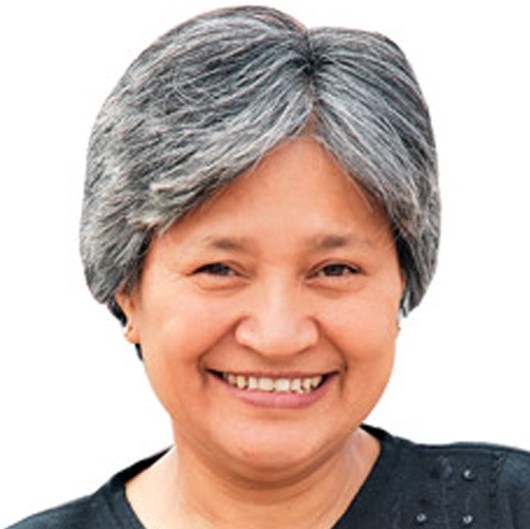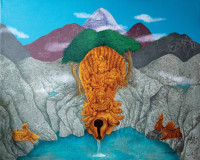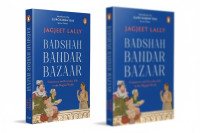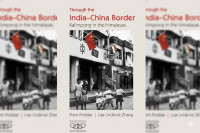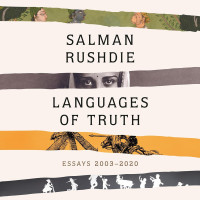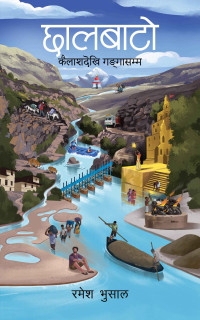Books
Suzie, whom I once knew, and Arundhati, whom I know now
She was anarchic, yet not an escapist—at ease in discomfort and uneasy in comfort.
Hisila Yami
My first impression of Arundhati Roy, when she became my classmate and roommate for a brief period in 1976, was that she came from a cosmopolitan world. Everyone called her Suzie. She was cute, confident, articulate, and had an excellent command of English. She wore multicoloured, oddly shaped earrings, necklaces, and bangles. Her ragtag dress, with a warped pocket protruding out of her navel, and matching her wild, flowing hair, was her identity.
She reminded me of the braless, bold, and bare hippie women I used to see in freak streets in Kathmandu, in the early 1970s. In fact, I was a bit disappointed that this vivid image of her should have been used on the cover of her latest book, ‘Mother Mary Comes to Me’.
She was daring. I remember she nearly drowned when she plunged into the Veraval beach in Gujarat, where we were taken for a study tour in 1977. Luckily, fishermen saved her. She also managed to get an Afghan student deported who was bullying and bashing fellow students at SPA.
I thought she was spoiled, drawing and sharing cigarettes with men. In those days, marijuana circulated freely in our hostel. Suzie often carried a fat novel, which I assumed she held just to show off. She, in turn, found me naïve, once remarking, “Hisila, you talk through your hat.”
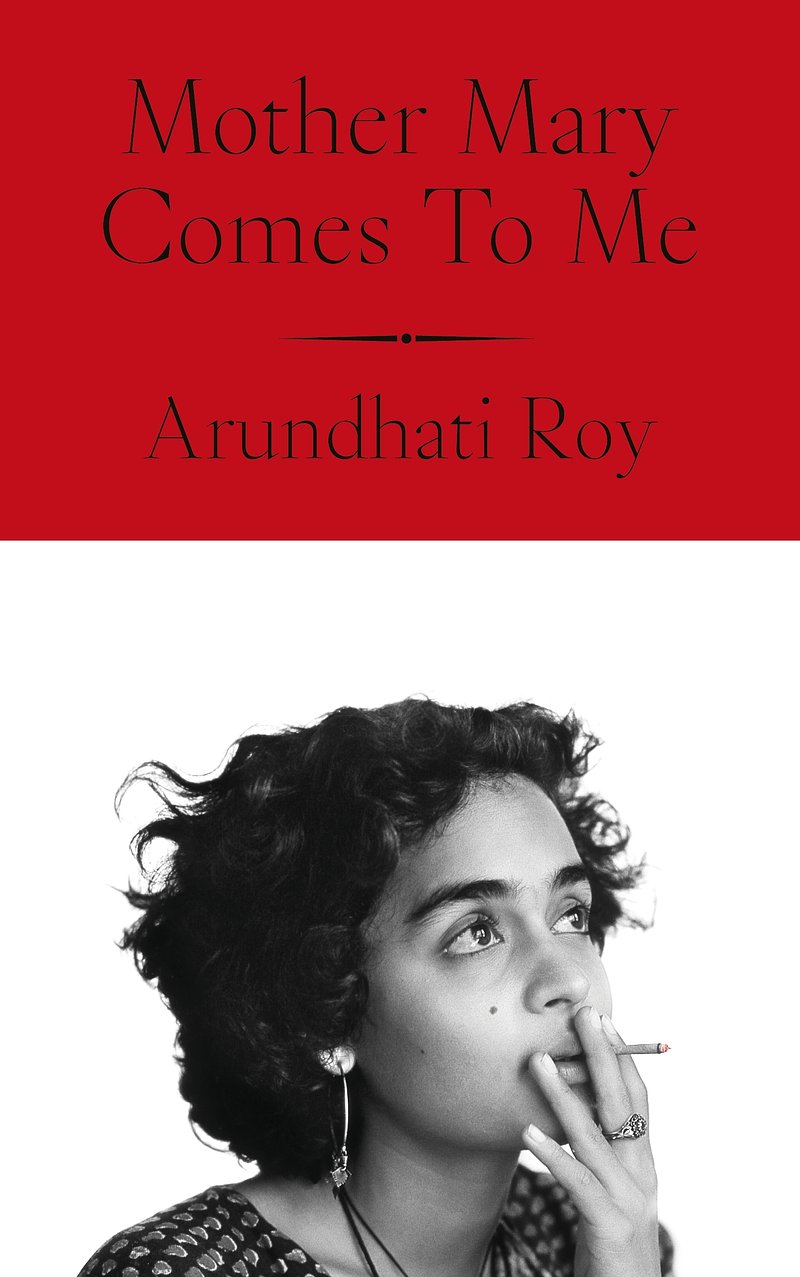
Indeed, beside her, I felt hopelessly “rural”, having been raised in the protected campus life of IIT Kanpur under the care of didis. I had been taught to wear bras, maintain menstrual hygiene, dress neatly, and drink milk every morning. When I arrived at the School of Planning and Architecture (SPA), I was a complete misfit.
Golak, a sweet boy from Orissa whose father worked in the steel plant in Rourkela, was the bridge between the “rural me” and the “cosmopolitan Suzie”. He was talented in art and painting, but struggled with English. He was kind to both of us.
The architecture department and its hostel (or “hot-sell”) were a world of their own. This life was beautifully captured in the film ‘In Which Annie Gives It Those Ones’, written by her and directed by Pradip Krishen.
Our head of department, Cyrus Jhabvala, would often drop by the college in his half-pants, sharing cigarettes with students. I was shocked to see my roommate smoking with him! Suzie had a strong sense of who she liked and disliked. Many men were drawn to her, but she could cut them down sharply with her biting tongue if they approached her the wrong way. She could be equally scathing and mocking towards girls who pretended to be “modern” while holding feudal mindsets.
She didn’t care what people said about her. With teachers, she argued boldly and often turned debates into satire. I remember her once telling me she would probably marry a foreigner. I almost believed her, given her unconventional style, culture, and mannerisms that did not fit the average Indian man.
Eventually, she grew close to GC, a senior student from Goa, while I became close to BRB. Both GC and BRB had ties with leftist activists in JNU and DU, and through our political and intellectual circles, Suzie and I grew closer. We eventually married our respective seniors while still students.
After graduation, our paths diverged yet converged on certain social issues. She became a serious literary critic and writer known by Arundhati Roy, while I became a transformative political activist and known by Pārbati during the People’s War (PW) in Nepal. During that time, I once visited her secretly at Pradip Krishen’s house. She told me that ‘The God of Small Things’, her Booker Prize-winning novel, was part fiction and part reality.
Now, reading her latest work, ‘Mother Mary Comes to Me,’ I was astonished by how artfully she concealed her poverty behind poetic expression—both physically and literally. I did not know that she was the daughter of a difficult, defiant, and “devilish” mother, or that her days at SPA were an escape from poverty, pre-puberty, and ‘parent-less-ness’. I finally understood why she hesitated to help my daughter get admitted to the school her mother ran during the People's War in Nepal.
She and her brother had grown up on edge under the shadow of their moody mother. I could not believe they called her Madame Mary, gangster, banker, etc. No wonder Arundhati has kept her partners, lovers, and even state actors perpetually on edge, ultimately making them defensive, disoriented, and reactive. In short, she was the king, and the rest were the queens orbiting around her.
Now I understand why she was often snappy, sarcastic, and blunt during our SPA days. Unfortunately, her mimicking skills were inherited from her mother, who mimicked her at such a tender age. No wonder she has hidden Moth under a half-book jacket, subtly indicating her vulnerability in her latest book.
She was too frank to be comfortable with, yet she was never snobbish. She was anarchic, yet not an escapist. She was at ease in uncomfortable situations and uneasy in comfort. After marrying GC, she lived in a squatter settlement in Feroz Shah Kotla, but later felt stifled in the comfortable home left by Pradip’s parents (whom she married) after their death. Eventually, living alone.
I was deeply struck by how patient and objective she could be when examining her tormenting relationship with her mother, as to why, how, and with whom her mother behaves. She even admits she feels sadness not because she lost her mother, but because she lost a subject—one that had made her the writer she is today. One can see how her mother’s death impacted her and those around her by the way her new book begins and ends with her death.
Her love-hate relationship with her mother and artful handling have given her a holistic outlook, making her see beyond good and evil, right and wrong, personal and political.
Today, she writes passionately and uses streets and stages to raise awareness of gender, poverty, nuclear vulnerability, fascism, and sustainable development—much as we raise ours through structured political parties and state mechanisms.
The key difference is that we are transformative political activists, while she is a critical literary activist. As a wild literary spirit, she can address strategic issues boldly, unburdened by tactical consequences. We, the wild political beings, must balance frankness with caution, aligning strategy with tactics.
Yet, politicians need the feedback of critical thinkers like Arundhati. And Arundhati too must listen to politicians, lest her powerful voice drift into the anarchic void where brilliance loses its social relevance.
______
Mother Mary Comes To Me
Author: Arundhati Roy
Publisher: Scribner
Year: 2025




 16.12°C Kathmandu
16.12°C Kathmandu